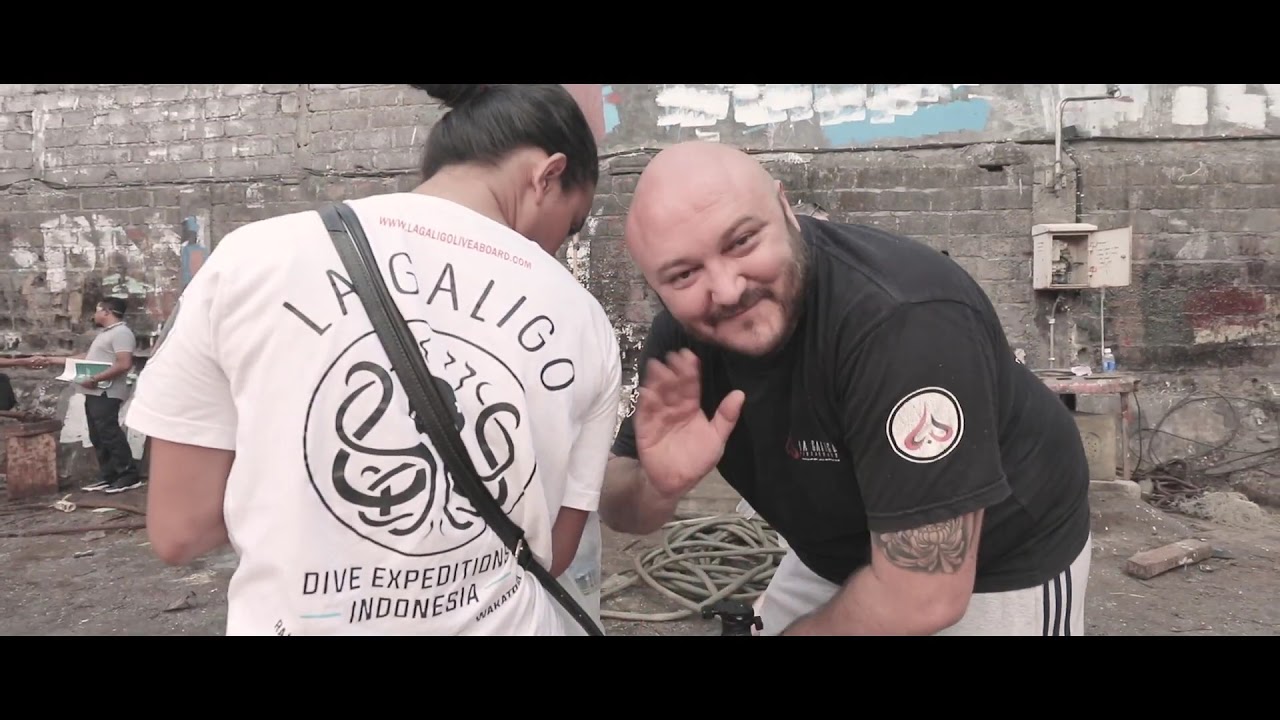The Journey of La Galigo Dry Dock
Every year at the end of April, La Galigo departs Sorong in Raja Ampat for the 1200 nautical mile journey to Bali, where she spends one month for her annual service and maintenance. The quest for any vessel, be it large or small, wooden or steel, has the potential to be treacherous due to the necessity to cross the northern part of the Banda Sea.
The initial part of the relocation takes us straight between the regency of Maluku, with Halmahera to the north, and Ambon to the south. After five days of masterfully navigating 4-metre waves, and consistent 20 knot wind, the ship and its crew find themselves in the city of Kendari, located in South-eastern Sulawesi.
La Galigo was painstakingly handcrafted over the course of 2 years around this part of Sulawesi, and the crew welcomes the shortstop off. Once the boat is refuelled, and the crew have had time to get some snacks, the Captain sets course for Sanur in Bali.
The second leg of this trip initially passes through Wakatobi, and then Batu Atas, where we have seen schooling hammerheads in the past, but this is no time to stop. After passing through the central southern part of Sulawesi waters, we enter Takabonerate national park, the world’s third-largest atoll. Next, we cross the Flores sea, which takes us past the northern point of Lombok and over the Wallace Line, located between Bali and Lombok.
After ten days of sailing the vessel arrives in Bali, and the whole of the La Galigo office team is there to meet her and the crew as she sails into port. After a day of clearing the vessel of almost all its contents, the 187 planned works can commence.
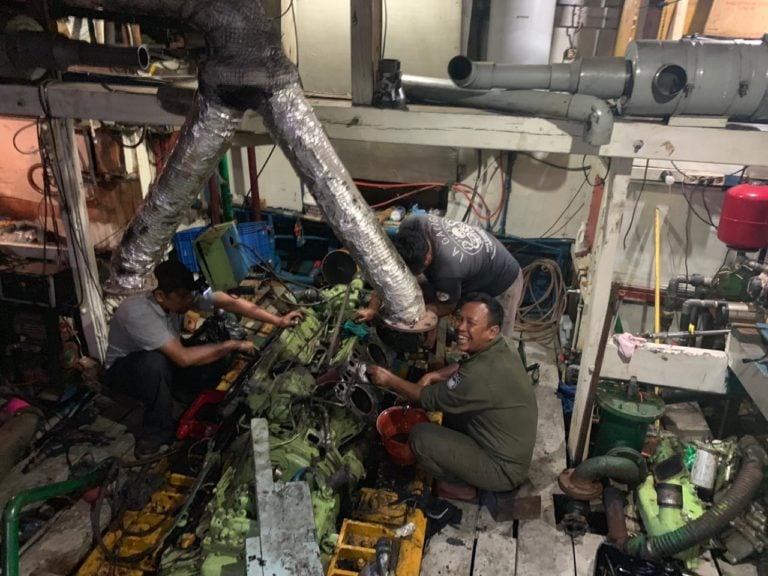
The Engine Room
First off is the main engine overhaul, which takes around five days on La Galigo dry dock. La Galigo uses a marinized truck engine from a Mitsubishi Fuso, which allows us to obtain spare parts quickly within Indonesia.
It also runs very efficiently for purpose and denotes the idea that you require a multimillion-dollar engine for such a large vessel. Manoeuvring the heavy parts from the top of the engine, from the boat to a speedboat, is enough to leave anyone shaky.
The engine itself goes into the workshop for a full overhaul and returns ready to go again three days later. During this time, other members of the engine room staff and the dive crew, are assisting in the servicing and maintenance of the Nitrox compressors, air compressors, and the dryer.
In the last year alone, La Galigo filled 10,192 tanks, making us the busiest (and best) liveaboard in Indonesia. This crazy amount of tank filling had taken its toll on the trusty dryer, so we decided to invest in a new one (R.I.P. Dryer#1). The dryer is a piece of equipment that bypasses the need for expensive manufacturer compressor filters.
It consists of a cooler, and a 12-litre dive tank full of carbon and other bits that we won’t go into. Our good friends from NRC, Stas and Alex, were on hand to install the new piece of gear, and to get the filling station back in full working order. As with every year, we are required to replace several of the membranes connected to the fresh water making system.
The system we use allows us to produce 3 tons of fresh water from seawater per day, and it results in water good enough to drink. This is a costly process, but one we find necessary to keep up to 16 divers in hot, fresh water showers every day.
This year other works included in the engine room were the top overhauls of both 55 KVA generators, an upgrade to silent blowers and seawater pumps, two new septic tanks and all plumbing, and an upgrade to the muffler to try and cool the ambient temperature of the space.
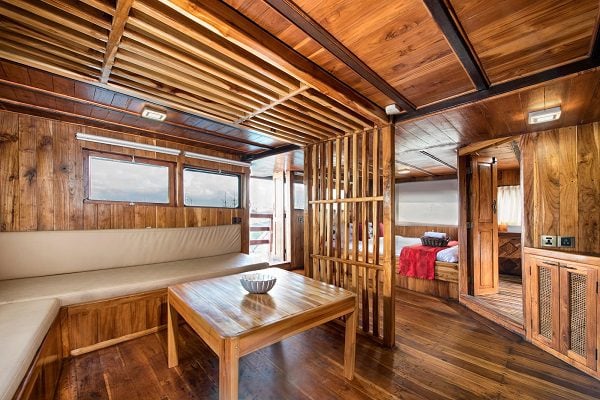
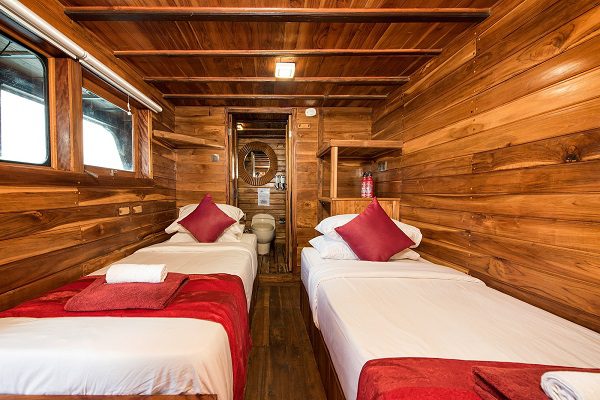
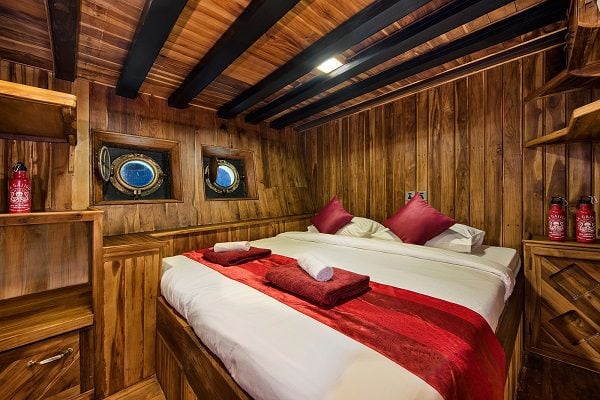
Cabins and Restaurant
The past year saw nearly 500 guests join La Galigo trips in Komodo and Raja Ampat, so we felt it necessary to give the cabins a good functional overhaul on La Galigo Dry Dock. All the showers which were once concrete floored have now been tiled, and all the wash basins and toilets replaced for new.
We also found several plastic bags lodged in the toilet system, which might explain why we received so much feedback on issues with flushing. Seriously, who puts plastic carrier bags down a toilet?
Fresh new mattresses and a full new stock of bed sheets and pillows were purchased, and if anyone would like to buy any second-hand bedsheets….I’m your man, 28 sets going cheap!
All the cabin and restaurant ceilings were resealed using Flex-seal, an amazing new product that went viral in the U.S. after an excited founder decided to make an advert. You can check out the video on YouTube if you search ‘Flex-Tape’, hilarious!
In the restaurant, our troublesome air conditioners were relocated, and the compressors also moved to allow a shorter length between the inside and outside parts of the machines. New lighting and a new shade of varnish finished the space off nicely, ready to welcome back divers for their next meal.
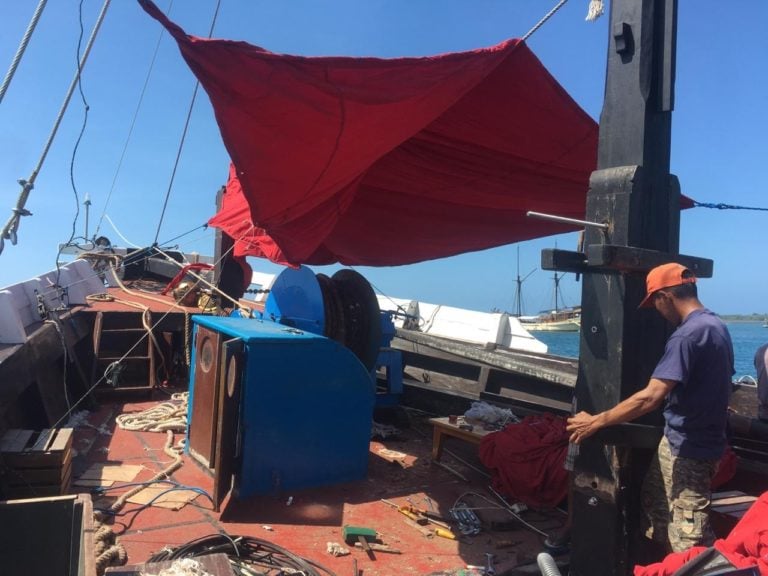
Exterior Decks
The three decks of La Galigo have received the most amount of (financial) treatment this year. All decks were removed down to the bare wood, then resealed with epoxy, followed by fibreglass, then re-fibreglassed with an anti-slip finish.
We also decided to move away from the red colour we have used for two years and decided to go with a light grey. Another significant piece of work was removing and replacing the masts, which was supposed to happen during the month of February.
The wood required for the masts originates from Sulawesi, but sadly this year in between January and March, the area suffered heavy rainfall and subsequent landslides, which left the newly made masts, and the workers, stuck in their villages.
This meant that La Galigo could only pick them up as we passed through Kendari on the way to Bali. After five days, the more substantial mast at the front of the boat was erected, followed by the rear mast, which took another four days.
After these were erected, handrails were constructed from teak wood for the surround of the top deck, and a new shade installed from the rear mast. With the addition of new beanbags, the roof has been transformed into a great area to relax between the busy diving schedule.
La Galigo Dry Dock
The planned works for the hull this year were minimal, due to the fact we had made extensive upgrades in 2018. Once the 169 tons of La Galigo was dragged up the slip, we noticed how little marine life had clung to the hull. Barnacles and molluscs thrive off the hulls of vessels operating in tropical seas, and we are often required to have to take a large paint scraper to the hull before any repairs and maintenance can go ahead.
This year, however, there was very little, and we attribute this to the fact that we spent little to no time sitting in the harbour throughout the past year. After some simple ‘packing’ where horse hair and epoxy resin is used to plug small gaps in the hull, we moved on to the mechanical elements associated with drydocking.
Some simple alignment work to the propeller and its shaft, have resulted in a gain of nearly 2 Knots on our average speed. This small job allows us to travel 48 nautical miles further every day, and get to out of the way dive sites quicker.
Once all the technical stuff is out the way, we moved forward with our 2019/20 colour scheme. Our in-house graphic designer provided us with five different samples, and we had a vote in the office to decide what we should go with. The girls won unanimously with layout, and I was left to select the paint, which in no way shape or form is by any means pink.
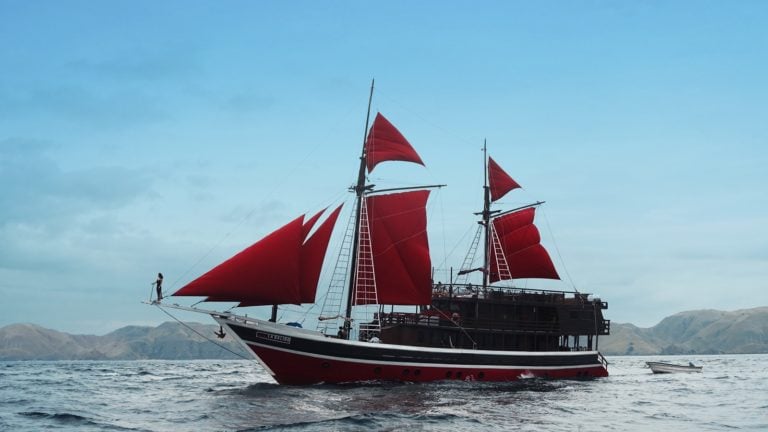
Summary
2018 saw our busiest year yet, and a surge of booking requests meant that we have had to work extremely hard to get La Galigo back to her former glory.
Thanks to some excellent guest feedback, we decided to place an extended break halfway through the year to allow us to control aesthetical maintenance much better.
For now, we are all set for the upcoming Komodo season, which starts on the 2nd June, through to September. We have a limited amount of spaces remaining for Komodo this season, so don’t delay getting in contact with us soon.
Cheers
Tom Simpson

